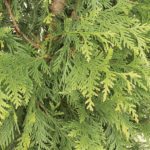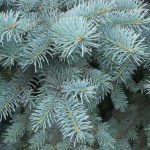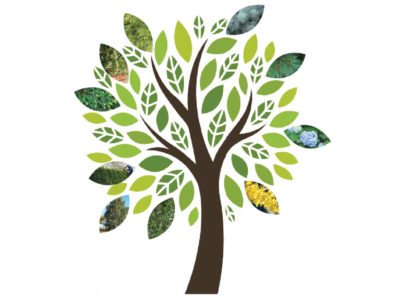 Still need help deciding which trees and shrubs to add to your landscape this year? In several hardiness zones, the time for planting is now. Check out the top 10 most popular trees sold through the Arbor Day Tree Nursery and see which trees are perfect for your landscape.
Still need help deciding which trees and shrubs to add to your landscape this year? In several hardiness zones, the time for planting is now. Check out the top 10 most popular trees sold through the Arbor Day Tree Nursery and see which trees are perfect for your landscape.
North Privet
(Ligustrum x ibolium)
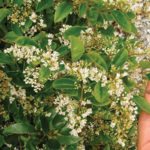 This deciduous or semi-evergreen shrub is America’s fastest-growing hedge, growing up to three inches per year. The shrub’s dense, dark, glossy green foliage makes it an excellent choice for hedges and privacy screens.
This deciduous or semi-evergreen shrub is America’s fastest-growing hedge, growing up to three inches per year. The shrub’s dense, dark, glossy green foliage makes it an excellent choice for hedges and privacy screens.
If you’re interested in a hedge with a formal appearance, this privet tolerates shearing well. When you grow it as a hedge, shearing it early and often helps to develop thick layers of branches for year-round privacy.
Green Giant Arborvitae
(Thuja standishii x plicata‘Green Giant’)
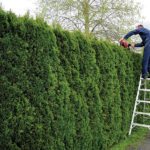 The green giant arborvitae is a large, vigorous, fast-growing evergreen—shooting up by as much as three feet per year until maturity. Its natural pyramidal to conical form boasts dense, rich green foliage that darkens or bronzes slightly in the winter.
The green giant arborvitae is a large, vigorous, fast-growing evergreen—shooting up by as much as three feet per year until maturity. Its natural pyramidal to conical form boasts dense, rich green foliage that darkens or bronzes slightly in the winter.
This is an exceptional landscape tree for use as a screen, hedge or single specimen. It is also resistant to wind once established and can withstand heavy ice or snow, making it a good choice for a natural windbreak.
Eastern Redcedar
(Juniperus virginiana)
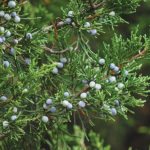 The eastern redcedar tree is a common sight throughout most of the plains states and eastern United States on road cuts, in fence rows and scattered across abandoned fields—especially where limestone soils are present. It is an aromatic tree, with reddish wood giving off the scent of cedar chests and crushed fruit providing a whiff of the gin they once flavored.
The eastern redcedar tree is a common sight throughout most of the plains states and eastern United States on road cuts, in fence rows and scattered across abandoned fields—especially where limestone soils are present. It is an aromatic tree, with reddish wood giving off the scent of cedar chests and crushed fruit providing a whiff of the gin they once flavored.
Thanks to its tolerance of heat, salt, a wide range of soils and other adverse conditions, the eastern redcedar can be put to good use on the farm in windbreaks and in city landscapes for hedges, screens, clumps or even as specimen trees.
American Arborvitae
(Thuja occidentalis)
This native evergreen is a hardworking, versatile specimen. The narrow, pyramid shape makes it a natural choice for windbreaks. It requires almost no care when used as a hedge or screen. Pairs of these hardy trees make great accents for doors and garden gates. And single trees soften house corners.
Tall and elegant, the American arborvitae may be the right solution to your landscaping challenges.
Canadian Hemlock
(Tsuga Canadensis)
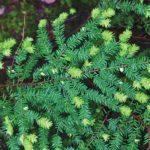 This hemlock is one of our members’ favorites for privacy screens and hedges because of its handsome, graceful appearance and ability to be sheared to any height or shape. The tree is also one of only few evergreens that can handle full sun and full shade, though it prefers a site where it can receive both shade and sun.
This hemlock is one of our members’ favorites for privacy screens and hedges because of its handsome, graceful appearance and ability to be sheared to any height or shape. The tree is also one of only few evergreens that can handle full sun and full shade, though it prefers a site where it can receive both shade and sun.
If you’re in need of an evergreen landscape tree for a privacy screen, grouping or foundation planting, the Canadian hemlock may be a good solution.
Hybrid Poplar
(Populus deltoides x Populus nigra)
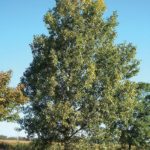 Hybrid poplars are the thoroughbreds of the tree world. Their claim to fame is speed, with vertical growth of five to eight feet per year not being uncommon. This cottonless hybrid can be harvested for firewood in five to seven years, making it a sustainable source. It also works well for visual screens and hillside or sand dune stabilization. While nice for quick shade, the hybrid poplar should only be planted in landscape where occasional limb breakage is not a problem.
Hybrid poplars are the thoroughbreds of the tree world. Their claim to fame is speed, with vertical growth of five to eight feet per year not being uncommon. This cottonless hybrid can be harvested for firewood in five to seven years, making it a sustainable source. It also works well for visual screens and hillside or sand dune stabilization. While nice for quick shade, the hybrid poplar should only be planted in landscape where occasional limb breakage is not a problem.
Colorado Blue Spruce
(Picea pungens)
One of our most popular ornamental conifers, the Colorado blue spruce (or simply, blue spruce) is a truly magnificent sight. Its silvery blue-green coloring and perfect Christmas tree shape make this tree a great landscaping focal point on commercial and residential properties. It is also widely used for privacy or a windbreak.
Eastern White Pine
(Pinus strobus)
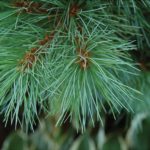 The eastern white pine has played a very important role throughout the history of America. In colonial days, the best of the trees were set apart by the king for masts on British ships. As the nation grew, the lumber of white pines built homes and businesses.
The eastern white pine has played a very important role throughout the history of America. In colonial days, the best of the trees were set apart by the king for masts on British ships. As the nation grew, the lumber of white pines built homes and businesses.
Today it is still a valuable commercial tree but also favored in parks and spacious yards—both for its beauty and its fast growth. It has also been named the state tree of both Maine and Michigan.
Blue Hydrangea
(Hydrangea macrophylla ‘Nikko’)
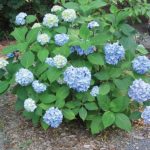 The blue hydrangea is the image most of us conjure up in our heads when we think of hydrangeas in general. It is a timeless landscape plant that is beloved by many, including Martha Stewart.
The blue hydrangea is the image most of us conjure up in our heads when we think of hydrangeas in general. It is a timeless landscape plant that is beloved by many, including Martha Stewart.
Giant, long-lasting, mophead blooms appear in the summer, adding lovely color to the landscape. These shrubs work well as stand-alone specimens or as a hedge.
Forsythia
(Forsythia x intermedia)
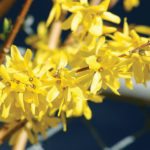 There’s no better way to welcome the coming of spring than with the profusion of yellow blooms covering graceful, arching branches. The forsythia is a fast-growing, hardy shrub that blooms early—providing a sunny sight before the rest of the landscape greens up.
There’s no better way to welcome the coming of spring than with the profusion of yellow blooms covering graceful, arching branches. The forsythia is a fast-growing, hardy shrub that blooms early—providing a sunny sight before the rest of the landscape greens up.
Forsythias make an excellent choice for those wanting a fast-growing flowering hedge. For best results, plant forsythia 4-6 feet apart when creating your hedge.
Sheereen Othman is a communications associate at the Arbor Day Foundation.

